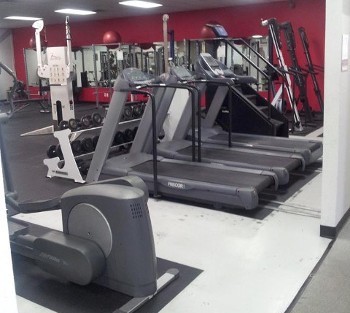How to Calculate Heart Rate
In my last blog I talked about how important it is to do High Intensity Interval Training for fat loss. I want to reiterate that the effectiveness of your workouts depends entirely on how intense your intervals are and if you are staying within the proper heart rate zone for your body. If you aren’t feeling a slight burn in your muscles during the high interval, you might want to kick it up a notch. To make sure you are pushing yourself sufficiently, I recommend learning how to calculate heart rate for mastering your intervals.

Your first step is selecting a stopwatch that comes with a heart rate sensor, I personally use the Polar RS100, but there is plenty of options to choose from. You can also check your heart rate on the treadmill or elliptical at the gym. Your second step is to determine your necessary heart rates. Make sure to warm-up for at least 5 minutes before doing a workout. If you are a beginner with poor cardiovascular fitness, you might not be quite ready for interval training and should maintain a low steady heart rate (HR1) for 30-60 minutes, three times per week.

To estimate heart rate, let’s do some basic math:
HRMax = 220 – your age (your recommended maximum heart rate)
HR1 = HRMax*0.7
HR2 = HRMax*0.8
HR3 = HRMax*0.9
*Note: HRs are averages; get within 5bpm and you are solid
If you are ready to advance then start doing intervals from HR1 to HR2, spending up to 3 minutes at HR1 and increasing your intensity for 30-60 seconds at HR2. If that seems to be too easy after 60 minutes, increase your time in HR2 and decrease your time in HR1. Sounds simple, but make sure you plan accordingly.
Try our Interval Training Calendars to allow us to Calculate your Heart Rate and put a workout plan together for you! Kelly currently uses a FitBit Blaze to track her workouts and monitor heart rate
Once you excel, start your intervals from HR2 to HR3. It doesn’t hurt (no pun intended) to spend a day each week working on short-burst sprints such as the 100m dash, or a 15-second timed sprint. I’m talking Beast Mode sprints. Go as fast as humanly possible, then give yourself a break to walk or jog before doing another sprint. Five to ten sprints per week will help you increase your speed and prepare you for a longer session of interval training. Remember: the higher the heart rate the more fat calories you will burn.
Of course, there are plenty of other ways to do interval training aside from running and jogging. For a more unique program designed to burn fat, try Interval Training Plans with Kelly Athletics and you’ll be sure to have fun.
Contact Me for More Info: